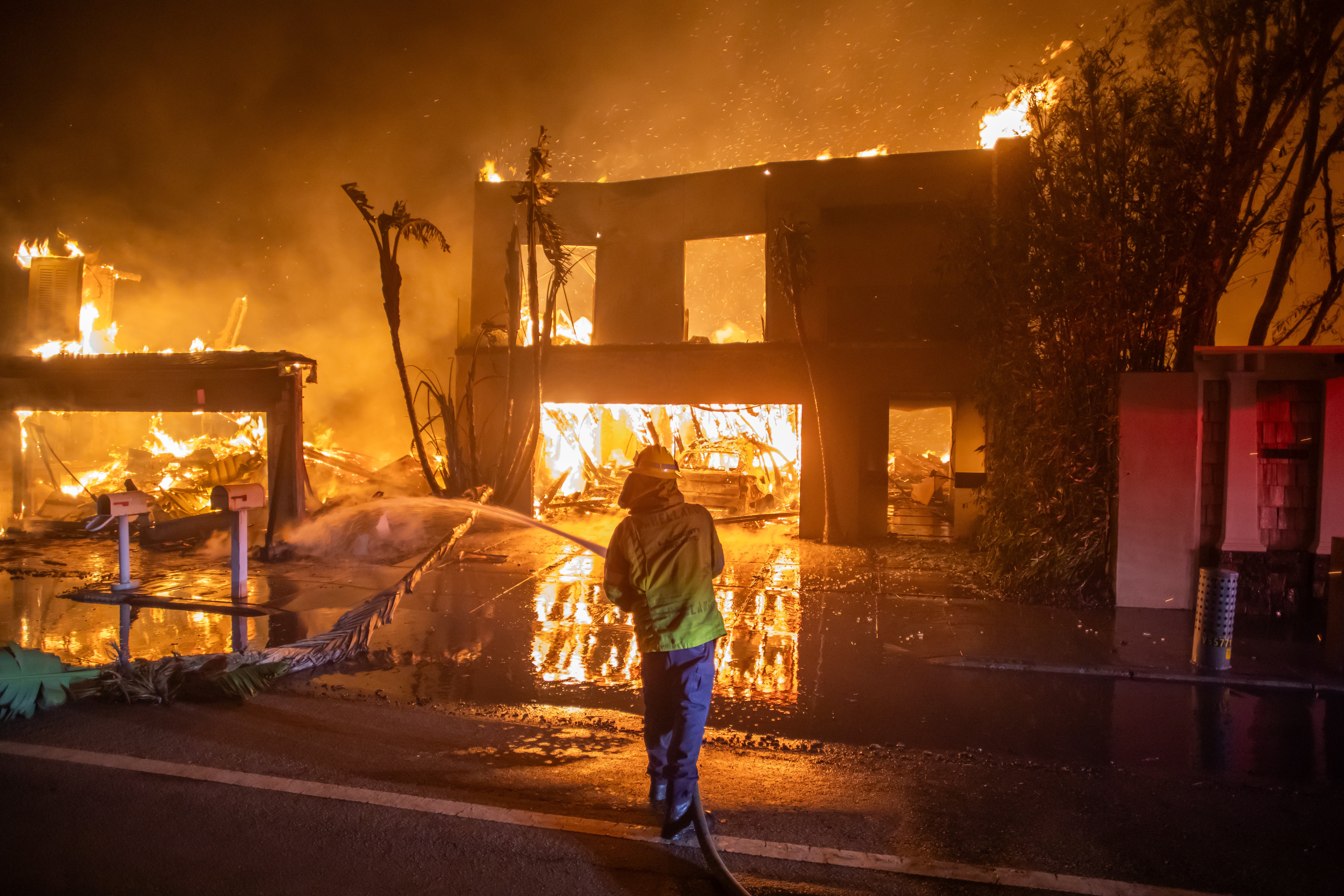Besides Cal Fire, multiple agencies have dropped fire retardant and water, including the U.S. Forest Service, the Los Angeles and Ventura county fire departments, the city and the National Guard.
Aerial fire suppressants are generally a mixture of water, ammonium phosphate — essentially fertilizer — and iron oxide, which is added to make the retardant visible, said Daniel McCurry, a civil and environmental engineering professor at the University of Southern California.
Aircraft battling fires raging through the Los Angeles area are dropping more than water: Hundreds of thousands of gallons of hot-pink fire suppressant ahead of the flames in a desperate effort to stop them before they destroy more neighborhoods.
While fire suppressants can be very effective, they do have limitations, the agency said: Strong winds can make it too dangerous to fly at the low altitudes needed for drops and can dissipate the retardant before it hits the ground.
Four fires driven by strong Santa Ana winds have charred about 62 square miles (160 square kilometers), according to Cal Fire.






















